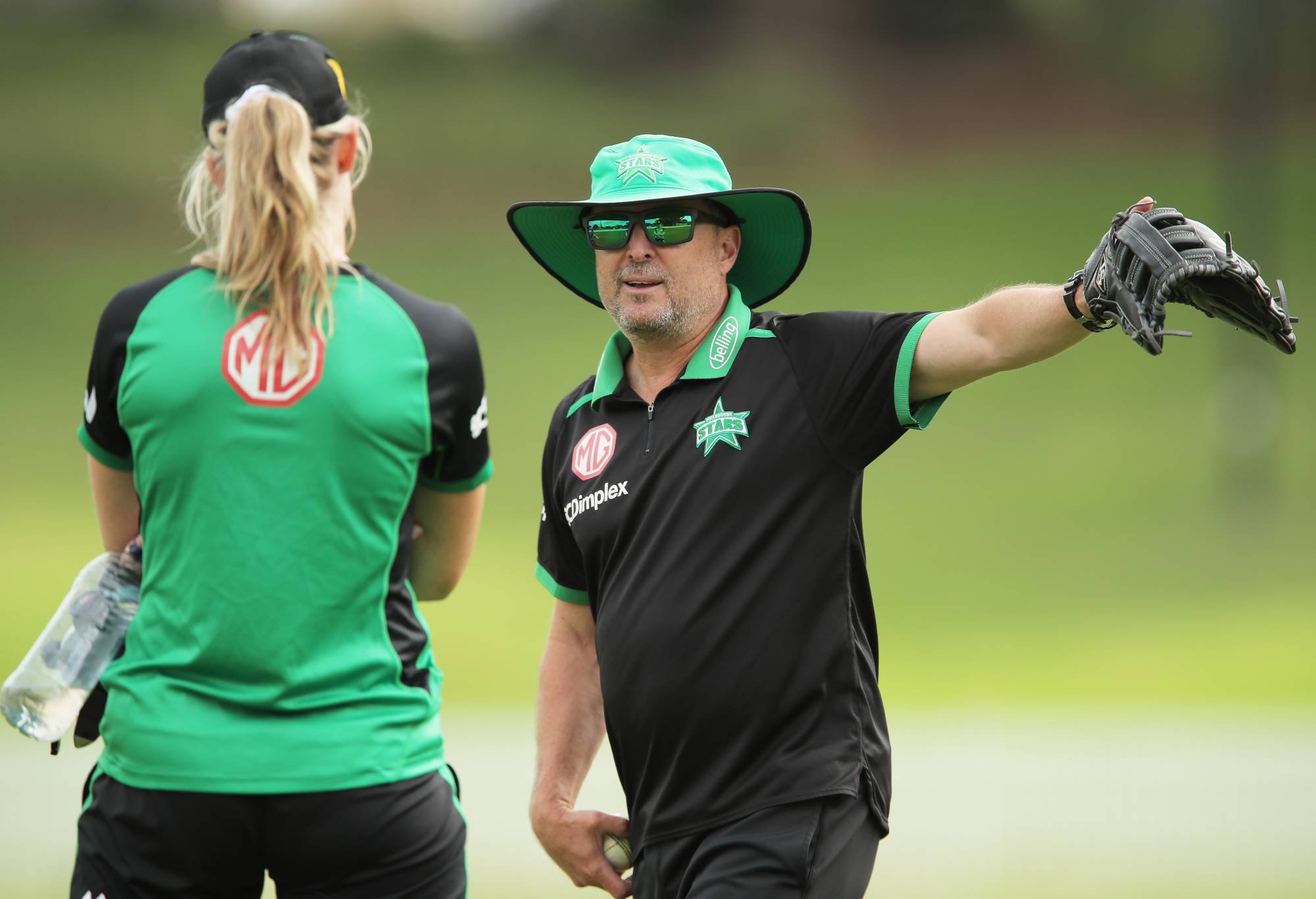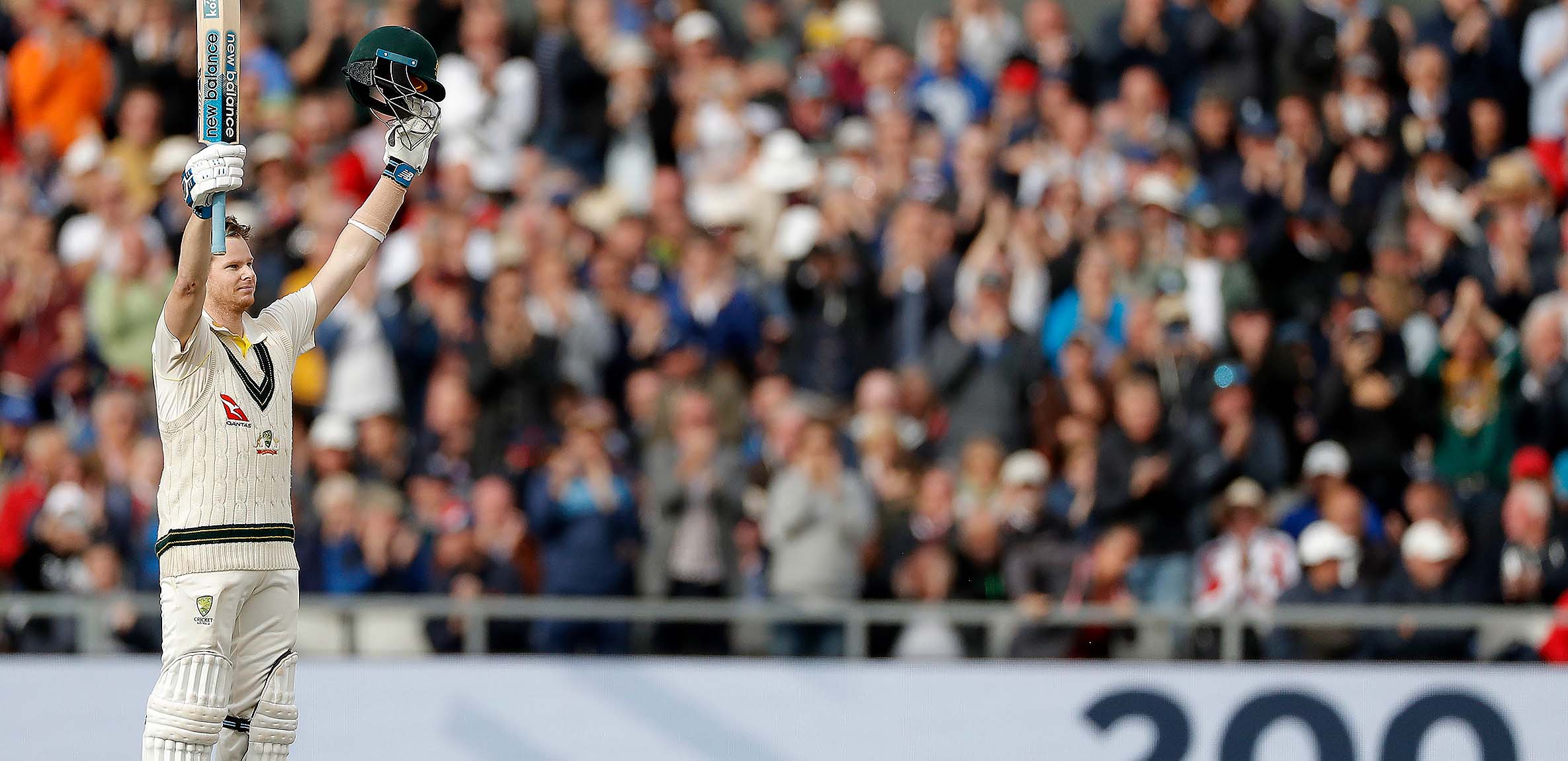The possibiliy of Jofra Archer's career coming to an early end will rob cricket of a bowler with so much talent
While a premature retirement isn’t the solution, he or England want, he may be forced into it if he can’t maintain a long run of matches.
Opinion
In this new weekly series, Trent Woodhill – a private batting mentor to David Warner and bowling coach for Adam Zampa – will analyse cricket from a new angle.
An innovative thinker, Woodhill has coached for teams around the world, including Australia, New Zealand and Pakistan’s national sides and IPL franchises.
Woodhill is a Cricket Australia consultant for the Big Bash League and holds a similar role with the English Cricket Board for its The Hundred tournament.
If you’ve got a question for Trent, submit it in the comments for the next edition.
It’s been well-documented, but I started working with David Warner about eight months before his T20 debut for Australia in 2009. I was there at the start and hopefully I will be at the end!
Our sessions aren’t as frequent as we’d like due to our various commitments. David made his Test debut against New Zealand when I was on their coaching staff.
But over the past 12 or so years, we’ve come together when we’ve needed to. David and I can sort a lot of things out over a WhatsApp exchange. It’s more of a mindset to practise.
For others who I spend less time with, I need to be around them more. Sometimes I’ll just fire off a text message to someone and remind them of what they do when they’re playing well.

Trent Woodhill during his time as Melbourne Stars WBBL coach (Photo by Matt King/Getty Images)
I’m also a bowling coach for leg-spinner Adam Zampa, who I’ve known since he was a youngster coming through the New South Wales ranks. It was fantastic to see him succeed at the World Cup.
The batters are really lucky in the Australian team. In Andrew McDonald, Jeff Vaughan and Michael Di Venuto, they’ve got three of the best batting coaches going around.
That trio is really good at bringing out the best in players; they’ve got a long history of that.
I’ve worked closely with Steven Smith in the past, though not as much nowadays. It was good to catch up with him on a short-form tour of England last year, but he’s great at figuring things out on his own.
I reckon the best problem you can have as a coach is when a player really doesn’t need you anymore. And Steven has got a really good relationship with Di Venuto, so that will be great for him going into the next phase of his career.
What Steven will do every now and then if he’s not feeling right – which is rare – is get in touch with me to say, ‘Are you seeing anything?’.
The way my brain works is I’m playing it all over in my head and seeing if anything stands out in his batting that isn’t normally there.
He and New Zealand’s Kane Williamson are very similar – they like to hit a lot of balls in the nets.
What I think a lot of people don’t realise is they enjoy it, so you wouldn’t want to stop them hitting so many balls. They replicate their game so well.
Kane, Steven and Marnus Labuschagne don’t over-train; they just love training.

(Photo by Ryan Pierse/Getty Images)
But there are others who go too far, who you have to stop. That’s through encouragement where you tell them, ‘I think you’ve had enough now’.
Often over-trainers are looking for perfection and that’s dangerous in cricket. You don’t always have to feel comfortable when you bat.
If you look for that then you’re probably not going to be that consistent. The beauty of your Smiths, Williamsons and Warners is they score runs when they’re not feeling great.
You want to build training up to a point and then stop. You want them hungry to do it again tomorrow.
I think players are better off hitting every day for a shorter period than hitting two or three times a week for long periods.
Ashes preparation
Leading into the first Test at the Gabba, each batter’s preparation will be tailored. The aforementioned coaches, with Justin Langer sitting over the top, will do case management.
They’ll go through and assess every player – where they’re at physically, mentally, technically – and then it’s like coming in for a service; some will need more than others.
The coaches then suggest to the players, ‘This is what we feel you need to be ready for ball one at the Gabba’. The player might go, ‘Well, I think I need a bit more of this and a bit less of this’.
Between the coach and the player, they’ll come up with a strategy leading into that first ball.
Every now and then there’s a tinker or change. Someone might feel they need a bit more spin bowling if their feet aren’t moving as well; someone else might feel they need to deal with a left-arm threat.
But by and large, players are encouraged to stick to and trust that prep style so they’re ready for action.
Marsh ready for Test recall when needed
While he wasn’t included in the Ashes squad for the first and second Tests, Mitch Marsh is ready for another coming in the baggy green after his T20 World Cup success.
Mitch is a great guy – an immensely talented gentle giant who plays spin and pace bowling really well. As a youngster, he was identified as someone who could play 100 Tests for Australia.
That hasn’t happened so far, but 32 Tests into his career, I don’t see why he couldn’t go on and play another 50 or 60 matches.
I’ve known Mitch for a while but first worked with him last year on Australia’s UK tour for short-form matches against England.
I was drawn to Mitch because he always had time to chat, always had a smile on his face. And the way the ball sounded off his bat was something else.
In my little time working with Mitch, I was really excited by his level of ability and how he’s starting to believe the plaudits.
At times Mitch has been berated by the Australian cricketing public, but those around him are massive fans. You can see the elation from his teammates and the support staff when does well.
He could be a great number five or six batter for Australia. Plus he provides some overs and offers support to his teammates. He’s a quiet leader, but a leader nonetheless.
The way the Test team has gone in the past couple of years, Mitch would be perfect to work with Cameron Green and support the older players like David Warner and Steve Smith.
Mitch is succinct and sharp in his preparation and repeats it. I’m not surprised by his consistency over the past four months because he’s consistent with his practise.

(Photo by Albert Perez/Getty Images)
Each session will look similar to the one before so he’s not dipping in and out of form, whereas a lot of players tinker in the nets.
They might have a good week and then they’ll have a bad week, so their consistency is not where it should be.
At 31, Mitch has refined his game. He’s accepted that he’s a real clean-ball hitter and I think he really loves to bat.
The big thing that I’ve said to him is to trust his power. In the Australian cricket landscape, we’ve encouraged players to hit the ball along the ground or not be too exuberant with their aggression.
But someone like Mitch, who’s such a clean striker, he only needs to get a piece of it and it goes the distance. You want to encourage players like that to attack the ball – they feel better when they’re making contact.
Mitch leaves the ball well, so I wouldn’t be concerned about him in the Test arena in that aspect.
Now that he’s figured out the preparation that works for him and believes in who he is, he can be a really important member of the Australian Test team as he is in the white-ball side.
Transitioning from white- to red-ball
I think sometimes players get sick of me saying it, but I’m all about ‘next-ball focus’.
Skipping between the different formats, it’s important to focus on that Test match, that innings, that next ball, rather than thinking of the whole series or how you can potentially be dismissed.
For Mitch, who will play red-ball cricket in a tour match against the England Lions, I’d be big on making sure that he’s playing off both feet really well – through making good contact – and picking a length that he’s happy to leave.
That means working through the different lengths of the bowlers. For the Ashes batters, that might be James Anderson, Stuart Broad and Chris Woakes.
And they need to know how they’ll approach their off-stump. Not so much on how to let the ball go or defend it, but working out how to score from that line.
Most predominantly white-ball players need to get the scoreboard ticking over in red-ball cricket – because that’s what makes them feel good, that’s what they’re used to.
When they are squeezed, it’s about knowing that once the floodgates open there will be an outpouring of runs.
There’s no hurry to get through the day – they must be really excited about that next ball.
The importance of transferring weight
With someone like Mitch, who I’d watched and enjoyed talking to, I first wanted to see how he used his core to make contact with the ball.
What I mean by that is how he transferred his weight through the ball off both feet. It’s something I spend a lot of time on as a batting coach.
Once I work out how a player transfers their weight through the ball, I work out how they do it on both sides of the wicket and straight down the ground.
I’d try to get Mitch to replicate the same movement over and over to make sure the contact is in a similar place.
When all batters are hitting the ball well, they usually make good contact and move really late.
What tends to happen is when guys go from red to white, they’re early on the ball.
They want to get out and negate swing or seam rather than trusting they can play late and make contact in the optimal spot – which is where the ball stops swinging or where it seams – so they can either let the ball go or hit it in the middle of the bat.
When they start looking too far ahead, they think, ‘I’m not going to stuff up here, I’m not going to get out – how do I deal with danger?’ – and so they react early and lose their natural lateness, which is that weight transfer.
In Mitch’s case, it’s about making sure he trusts that he can be late on the ball. Batting at three in T20 or 50-over cricket, the ball moves a lot – so the red ball’s not going to move any more than that.
Obviously in T20 they’re trying to make contact with as many balls as possible. With red-ball, they can defend and leave late.

(Photo by Bradley Kanaris/Getty Images)
That’s a big thing with David Warner – making sure he doesn’t lock into a defensive shot or leave too early because he may miss out on a scoring opportunity.
If you’re looking at Woakes, Anderson and Broad, you’ve got to make sure you can get to the other end or get the ball to the fence – that puts pressure back on the bowler.
That may not come for three or four overs, but you need to negate their skill-set by playing as late as possible.
Hopefully, players are bringing all this to the forefront in their prep and then doing it subconsciously in a match situation.
The closing stages leading up to the game will purely be their own routines.
When they go out to the middle, the last thing you want is the batter thinking about what their coach had said to them.